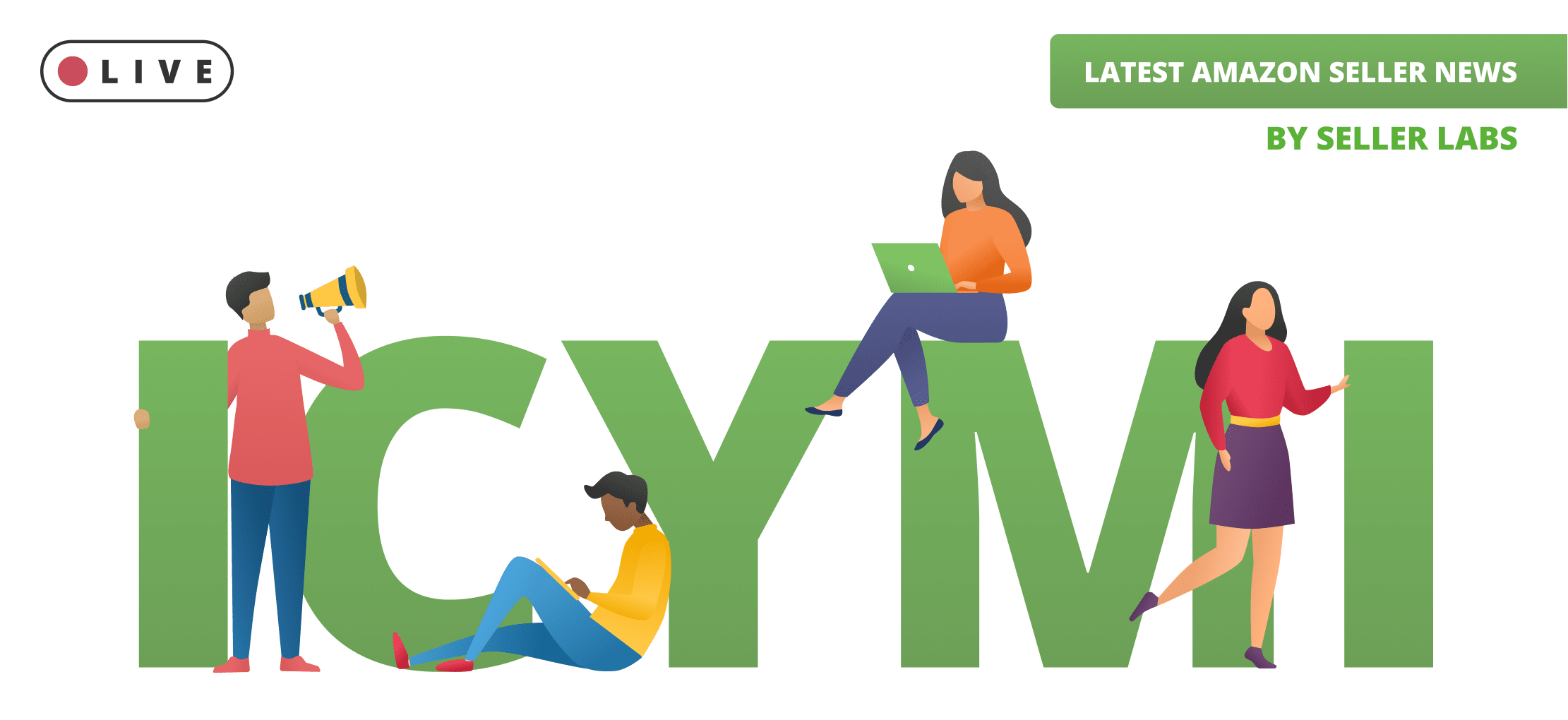Under the Amazon Sun: Prime Day 2022 Results, Key Takeaways & Tips

Theodore Roosevelt once said, “I believe that the more you know about the past, the better you are prepared for the future.”
With this wisdom in mind, we are giving a retrospective to the biggest eCommerce event of the summer, Amazon Prime Day 2022, and sharing our best tips on how you can apply Prime Day learnings to your Amazon Business as we move into Q4 2022 shopping holidays.
Did you know?
The first-ever Prime Day was a way to celebrate Amazon’s 20th birthday. The event ran in nine countries and resulted in outperforming Amazon’s Black Friday 2014 sales. Since then, Prime Day has grown to become a major shopping two-day holiday for Amazon and its competitors that completely altered the retail calendar. With summers being historically slower for eCom businesses, Prime Days’ goal has been to remedy that while leaving Amazon’s competitors, such as Walmart, Macy’s, and Target, no other choice but to respond to this extravaganza with their own sales and deals for the same period.
Fast forward, Amazon Prime Day 2022 took place on July 12-13, spanning more than 20 countries. The next day, Amazon posted a Post-Prime Day press release saying it had been their biggest Prime event ever, calling up some interesting insights. We handpicked the key ones.
Prime Day 2022’s Success in Numbers
- More than 300 million items were sold during the two-day shopping event. That means Prime members were purchasing over 100,000 items per minute worldwide.
- Altogether, Amazon Prime members saved over $1.7 billion on featured deals.
- Thousands of brands hosted live streams with Amazon Live streaming services and received more than 100 million views.
- The “halo effect” contributed to a total of $11.9 billion in online retail sales in the USA alone.
While many superlatives spring to mind when we see these numbers (that no doubt cause envious and worrying looks from competing retailers), one can’t help but notice some key metrics for the “biggest Prime ever” missing.
To save you time and effort, we’ve compiled this “one-stop shop” resource page with key Amazon sales performance insights from the most credible sources.
Consumer Behavior
Numerator’s early read insights focused on household participation and spending during the two-day shopping event. They found:
- Prime Day 2022 saw more households shopping with a higher spend per order compared to previous years:
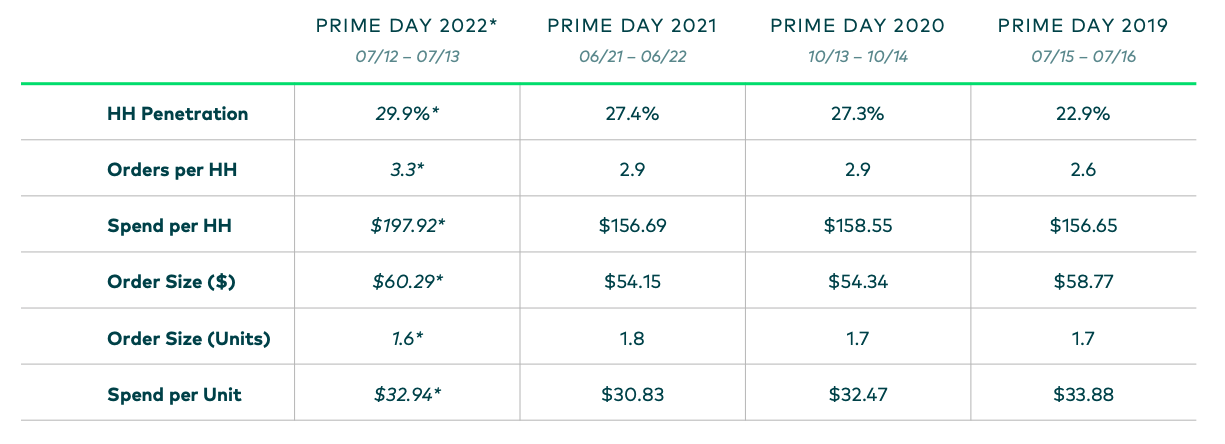
- 41% of those surveyed by Numerator said that Prime Day discounts were their main reason for shopping. Forty-four percent stated they did not consider other retailers for their purchases.
- The average Prime Day shopper placed three separate orders.
- Spend per household neared $200, up from the high $ 150s in the previous year.
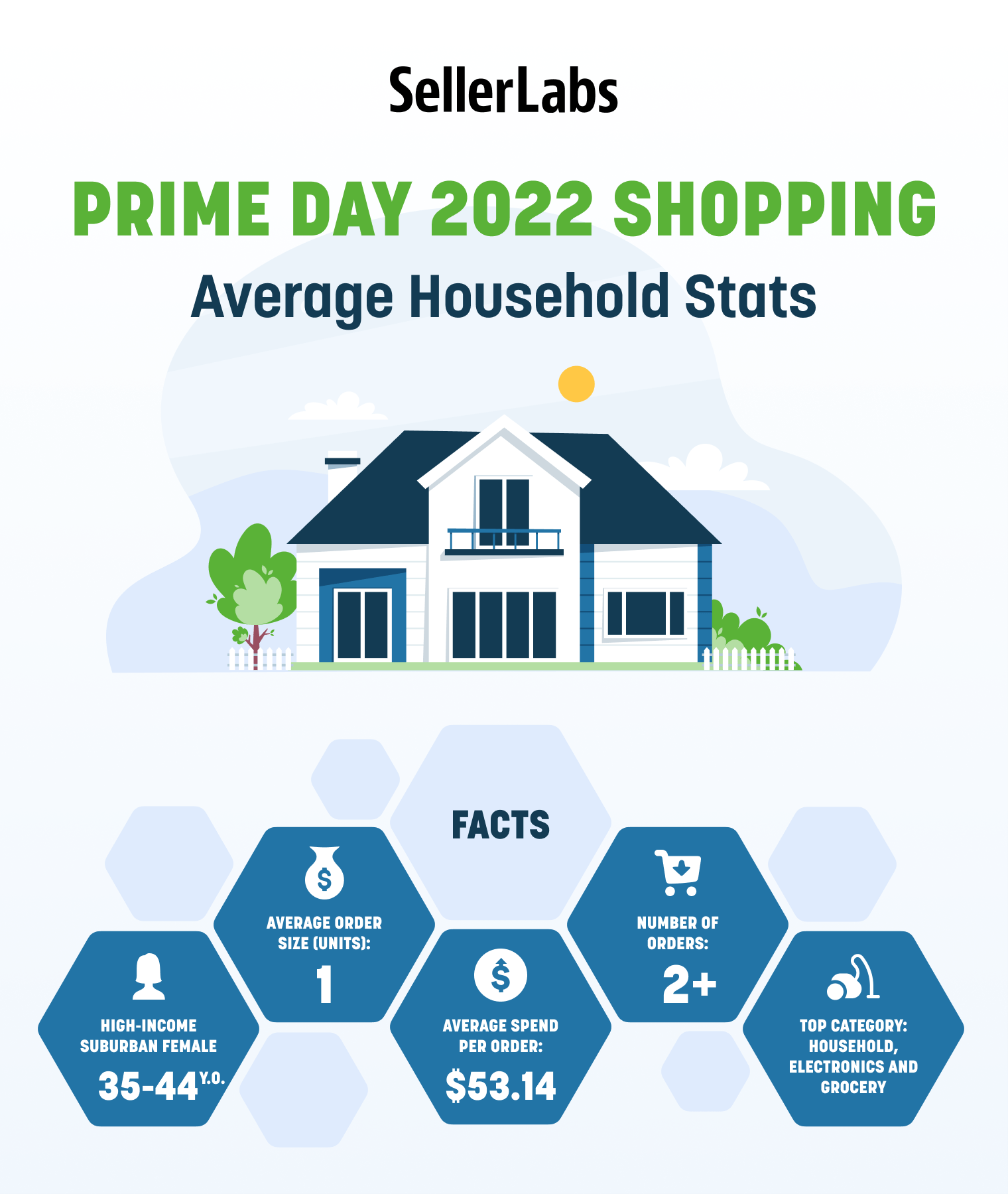
Adobe Analytics showed Amazon Prime Day’22 mirroring recent trends occurring in eCommerce:
- Retailers who offered the Buy Online Pick Up In Store (BOPIS) option saw a 20% conversion boost. Apparently, what emerged as a trend during the pandemic, has remained worthwhile for consumers and effective for sellers in encouraging more sales -some retailers even offered discounts to customers who opted for BOPIS.
- Buy Now, Pay Later (BNPL) was actively utilized among Prime shoppers. The BNPL payment method saw an increase of 13% compared to Prime Day 2021. This payment option allowed customers to stretch their budget and contributed to the 12% increase in the Prime Day 2022 average order versus Prime Day 2021.
- Customers prioritizing necessities as one of the main inflationary trends this year explained why Prime members took advantage of deals for more day-to-day products rather than big-ticket items compared to 2021. For example, many buyers leveraged Prime sales for Back-to-School shopping to get things like boys and girls apparel, Frito Lay lunch size chips, and ziplock bags.
Top-Selling Products
This year we saw a shift from the traditional splurge items such as brand-name electronics and shiny new tech products to necessities, with household essentials, health & beauty, and grocery being the most popular categories.
According to Numerator, the 10 top-selling products included: Fire TV Stick, Echo Dot 4th Generation, Echo Show, Dawn Dish Soap, Kasa Smart Plug Mini, Orgain Organic Protein Powder, Frito-Lay Variety Pack, Cascade Dishwashing Products, Vital Proteins Collagen Products, Apple Watch Series 7.
Customers were more calculated in how they approached deals compared to past years. They waited for Prime Day to buy a specific item from premium brands. Among the top-performing brands were Amazon Echo, Blink, Happy Belly, LANEIGE, and NuFACE.
Some of the best-selling items worldwide, according to Amazon:
- diapers and wipes from Pampers and The Honest Company;
- kitchen essentials from Rachael Ray, Le Creuset, and Hamilton Beach;
- VTech and LeapFrog toys;
- Vital Proteins Collagen Whey;
- apparel and accessories from Levi’s;
- car wash products from Chemical Guys;
- pet products from NUTRO, TEMPTATIONS, and GREENIES.
There were a lot of experts and publications that expressed their concerns regarding the success of this year’s Prime Day, saying it is going to be a bust. Naturally, rising inflation was at the forefront of everyone’s minds. But the Amazon Prime Day analysis proved otherwise – inflation didn’t seem to hurt sales; it just influenced the type of products consumers bought. Yet, the big day owes much of its success to marketing. Let’s take a closer look.
Why has Prime Day 2022 Exceeded All Expectations?
Overall, we see the event’s success as a result of Amazon’s new creative initiatives strategically combined with more traditional marketing approaches Amazon applied in previous years that have proven effective.
Compared to 2021’s Prime Day:
- The Buy with Prime initiative introduced by Amazon earlier this year allowed brands to offer their Prime deals even outside Amazon, which significantly extended the reach.
- Instead of putting focus only on its own retail, this time, Amazon pushed sales for its selling partners. Prime users who came to support smaller brands could easily discover them through the new “Small-Business badges”; the “Support Small Businesses to Win Big” offer gave members chances to win prizes for buying from small-business products.
- Amazon created a lot of hype on various platforms to get people excited: from morning talk shows and commercials while watching other programming to sneak peeks of deals on social.
- Affiliate marketing and influencers we actively employed to drive deal awareness for Amazon and individual brands. We even spotted prestige publications like Vogue were running promotions featuring Prime Deals.
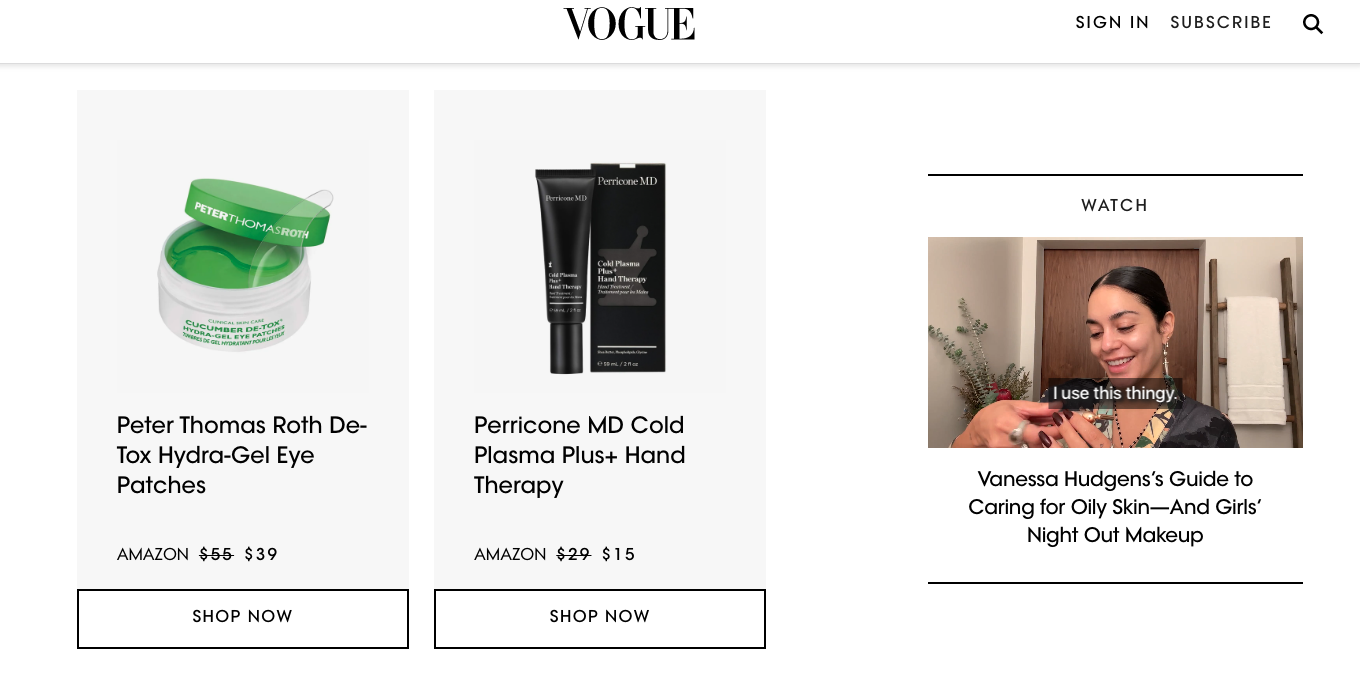
Added to that, this year showed much stronger participation of Amazon sellers because many of the supply chain issues, why many brands opted out in 2021, have been solved.
How Seller Labs Clients Performed
Tentpole events like Prime Day can drive business, but success requires a lot of preparation, understanding of the market, and positioning ad execution strategies.
Our sales reached a record high on Prime Day! We could not have achieved this without professional help from Seller Labs! Since we started using Seller Labs’ managed services in 2022, our sales have been growing at a double-digit rate Month-over-Month, and over 100% point-in-time over last year!
This accomplishment is exciting but not surprising – our account manager, Megan, and her team are passionate about helping us, knowledgeable, strategic, and the best communicators to understand our goals, as well as the experts in helping us achieve the goals!
From Behind the Scenes
Prime Day is the busiest time not only for our clients but for our Managed Services team as well:
During Prime Day, our biggest thing is monitoring budgets. Increasing spend where we see fit and capping campaigns that aren’t doing well. We want to give Amazon a few days post Prime Day(s) before we decide whether Prime Day was successful. After Prime Day, we look to pull back spend but try to capitalize on that increase in traffic we saw. I lean heavily on my Account Coordinators to monitor bids over the next couple weeks post-Prime Days
A few insights from our Account Manager team:
- Most brands experienced the largest increase in traffic and sales on Day 1 of Amazon’s two-day event.
- Those who set up deals and coupons in a timely manner saw higher results.
- Accounts that ran deals saw higher conversions than my accounts that didn’t.
- Having said that, some of our brands’ performance proved that an effective ad strategy can increase sales on Prime Day even without running significant discounts. We have a few cases when our brands from highly competitive categories did not run any deals at all but drove the best sales day ever with just a little increase in ad budgets.
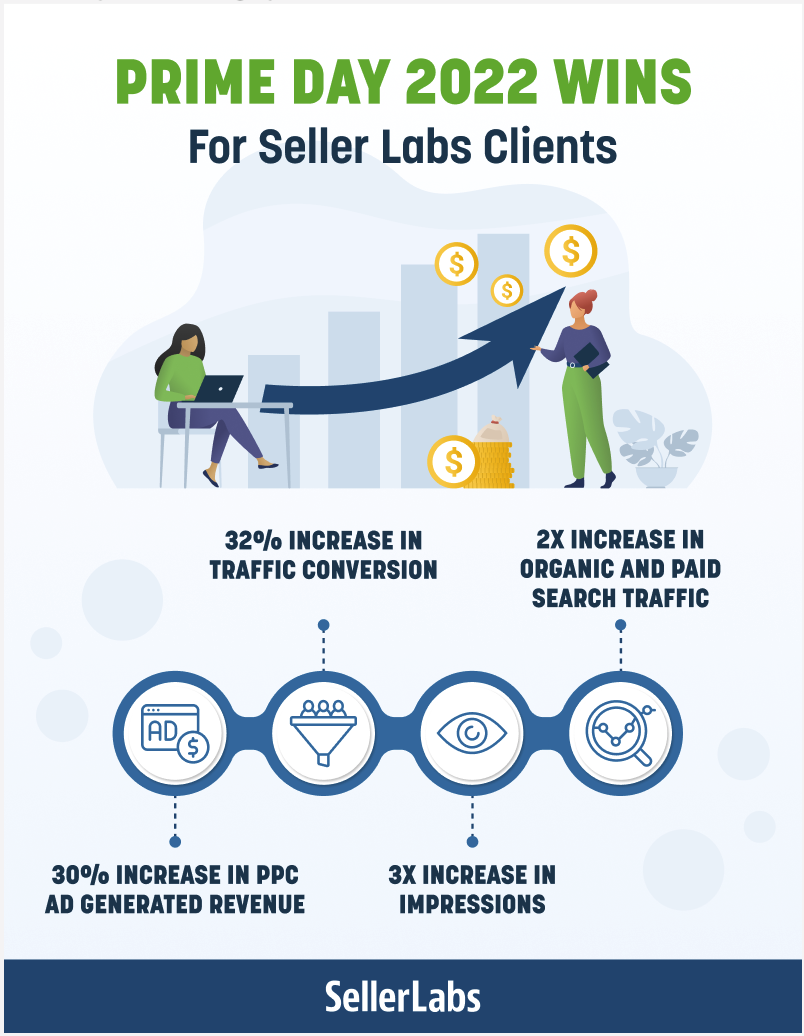
3 Top Post-Prime Period Tips
#1 Get additional reviews
More reviews = higher ranking on Amazon!
Our Amazon experts suggest taking advantage of the opportunities that come with increased sales:
My biggest recommendation is reviews! Use the tools within Amazon, or your PRO software, to capitalize on the large numbers of sales to request reviews so that your products look more authentic and trustworthy once the Q4 holiday traffic arrives.
For ideas on how to craft effective Amazon seller product review messages, check out our Top 4 Amazon Review Request Templates.
Gaining a higher number of reviews will significantly increase your organic visibility. You can also use the information left in product reviews and seller feedback to update and enhance listings for optimal conversion and buyer satisfaction.
Seller Labs PRO offers the Request a Review feature with more enhanced functionality and customization options than Amazon Seller Central.
#2 Analyse Your Search Terms Reports
If you’ve made it this far in this article, you’re probably a strategic thinker looking for ways to optimize your marketing efforts for better future performance on Amazon.
In this case, Search Terms reports found in your Amazon Brand Analytics is the gold mine you need to dig into.
Why are Search Terms important right now? Shopping events like Prime Day bring in new traffic, and
more traffic = more data = more basis for hypotheses!
Search Terms (AKA customer search queries) show what shoppers exactly type in the Amazon search bar as they start looking for products they have high intent to buy. These reports can give you a new level of understanding of how customers are looking for products you sell and what keywords they use. Based on the performance of the keywords, you can:
- Optimize your product listing titles
- Optimize bullet points on product detail pages
- Adjust your keyword ad strategy
For example,
- Find unique “Customer Search Term” values in your report that resulted in at least one order that aren’t in your running PPC campaign and add them as keywords to the campaign. Look for synonyms, abbreviations, and stemmings (e.g., cover vs. covering).
- Find “Customer Search Terms” that didn’t perform and add them to the campaign as negative keywords.
Learn as much as you can from your reports’ findings, keep testing new keyword hypotheses, and measure results. The best way to drive improvement in Amazon advertising is by testing.
The good news is that you don’t have to do it yourself – hire professionals to take care of your listing and ad optimizations!
Need help with Advertising Management?
#3 Retarget and Re-engage Prime Day Shoppers
Customers who have already interacted with your brand respond better to advertising.
Take advantage of the data Amazon has collected from the big day and retarget potential shoppers who have shown interest in your listings.
Sponsored Display Ads include features to help you retarget and re-engage your potential buyers on and off Amazon:
- Views Remarketing allows you to re-engage with the shoppers who have visited your listing in the last 30 days but have not purchased yet.
- Purchases targets people who have purchased from you in the past.
- Amazon Audiences gives you access to different audience segments, including In-market, Lifestyle, Interests, and Life Events segments.
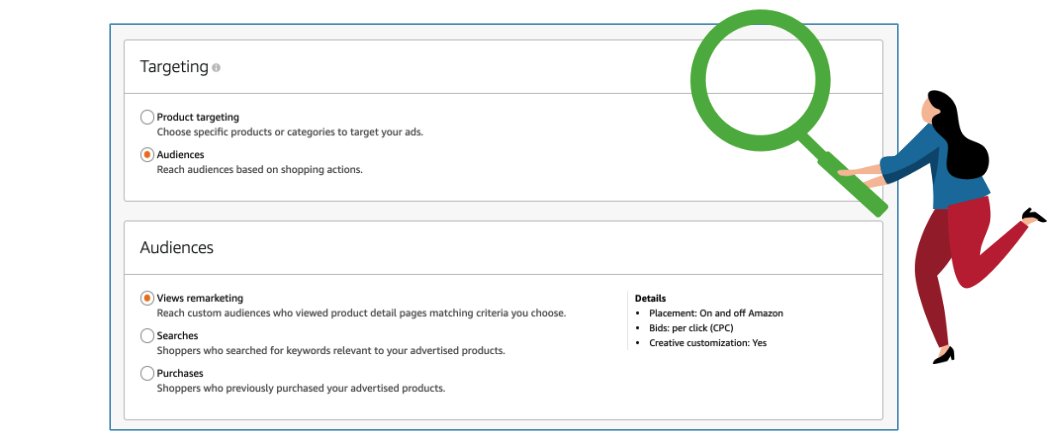
Depending on the goals of your remarketing campaigns, you can implement different strategies.
For example, to raise awareness for your new product launch, you can target the audience from the Interest segment who have recently browsed the category the product belongs to.
Seller Labs PRO Data Warehouse is designed for SELLERS LIKE YOU: connecting your data directly to Seller Central.
Key Learnings
- Overall, Prime Day in July 2022 was quite different than in past years. Shoppers’ switch from wanted products to needed products was likely impacted by the highest inflation we’ve seen in 40 years. But despite the recession, it was still a great success and broke Amazon’s sales records.
- Take advantage of the sales boost and ask for reviews!
- Data is your king! Prime Day events generate a lot of new data. Learn as much as you can from your Search Query reports – find new and best-performing keywords to add to your product detail page and backend search terms.
- Hiring professional services like Seller Labs to manage Amazon ads for you pays off massively as our clients see 70-100% revenue growth. Years of experience on Amazon allow our team to perfectly execute any campaign you want to try, regardless of the size of your business and day of the year.
Prime Day may be over, but the busiest shopping holidays of the year are just around the corner. Use Prime Day results as a model for what may happen during this period – the lessons you learned and the data you obtained will help you align and refocus your plans for Q4. And remember that having a plan in place for post-Prime Day is equally important as being prepared for the Day itself as it helps you continue engagement and stay top-of-mind when your buyers go to make their next purchase.
FAQs
Amazon Prime Day 2022 took place on July 12-13.
Top-selling items worldwide include premium beauty products from LANEIGE and NuFACE, Apple Watch Series 7, personal care products such as diapers and wipes, VTech, and LeapFrog Toys, and Vital Proteins Collagen Whey.
Inflation didn’t seem to hurt sales, though it influenced the type of products consumers bought. Prime members took advantage of deals for more day-to-day products rather than big-ticket items compared to 2021.
Take advantage of the sales surge and the newly obtained data. Request reviews from your purchases, study analytics reports to adjust your advertising strategy, and implement retargeting tactics such as cross-selling. If done right, you can continue to benefit from the uplift in Prime Day visibility.
Want To Grow Your Sales On Amazon?






